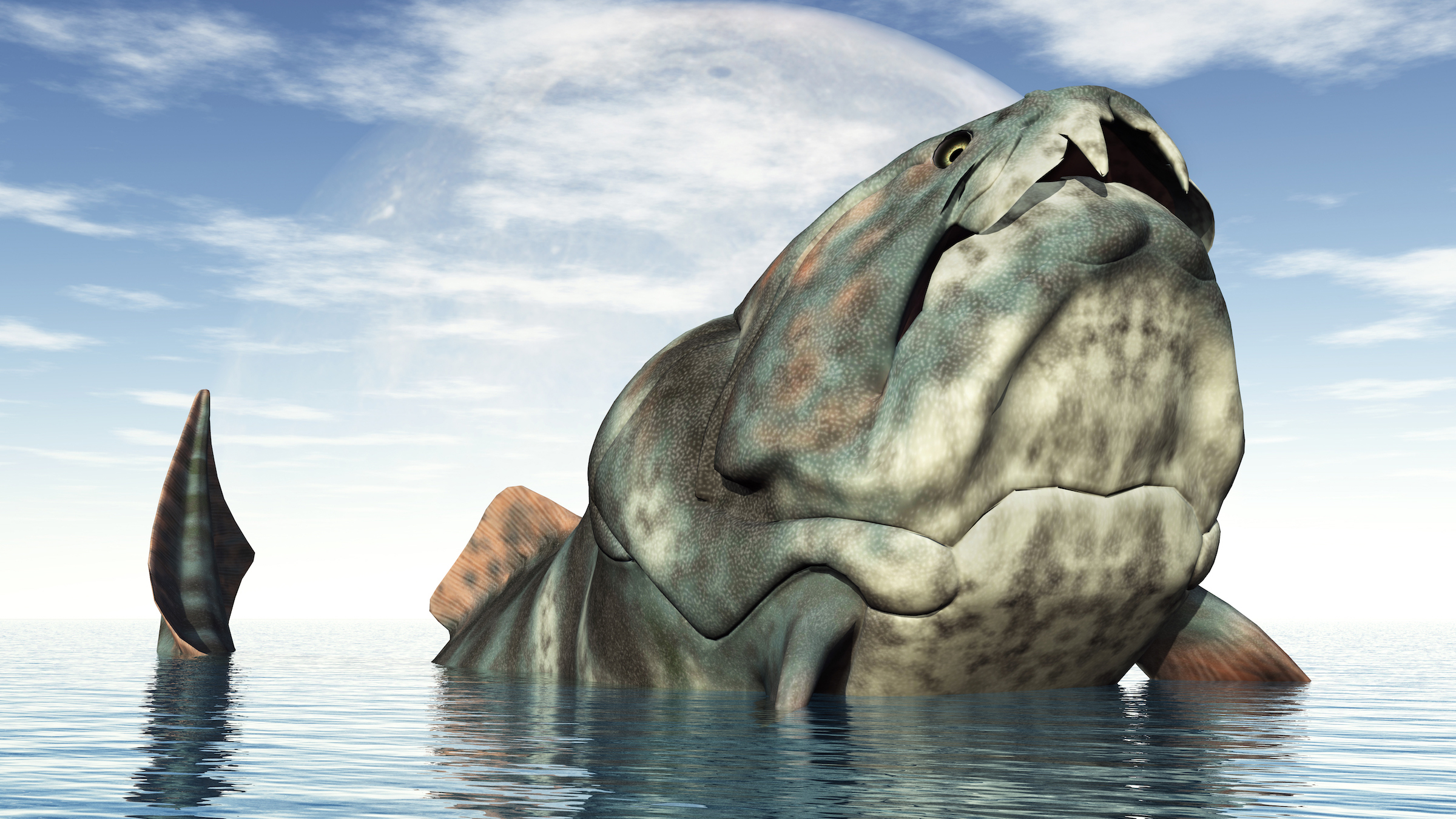Ancient monster fish 'Dunk' was short and chunky, study finds
One of the largest ancient fish on record, known as Dunkleosteus, was actually half as long, but still super chunky, a new study finds.
A 360 million-year-old sea monster that was once thought to be as big as a bus was actually less than half that long, but just as chunky, a new study finds.
The bony fish Dunkleosteus terrelli, nicknamed "Dunk," was one of many superpredators that prowled the oceans during the Devonian period (419 million to 358 million years ago). This massive armored fish, which prowled the oceans that once covered modern-day Ohio, had blade-like jaws that could snap shut with 8,000 pounds (3,600 kilograms) of force. The first D. terrelli fossils were discovered 150 years ago along the shores of Lake Erie near the city of Cleveland, and the largest known specimen resides in the collections of the Cleveland Museum of Natural History.
Unlike modern fish, which either have skeletons of cartilage or bone, D. terrelli had a bony, armored skull attached to a skeleton of cartilage. And the skull of D. terrelli was terrifying: at nearly 3 feet (85 centimeters) tall, it resembled the title character in the movie "Alien."
But only the skulls of these creatures fossilized. So early researchers extrapolated D. terrelli's size from the relationship between a shark's skull size and its body length and left it at that. For the next 150 years, D. terrelli would become a local paleontology icon, even becoming Ohio's official prehistoric fish. Yet despite that, very little scientific work focused on D. terrelli.
During the pandemic, Russell Engelman, a doctoral student at Case Western University in Cleveland, Ohio, found himself unable to do his normal lab research. Instead, he went to the Cleveland Museum of Natural History to think about some research questions.
Related: Ancient 'shapeshifting vampire demon' anchovy had saber tooth and fangs
While looking at the D. terrelli specimens, Engelman ran into a problem. "Everything in biology is influenced by body size," he told Live Science. "I tried using some of the old measurements, and biologically, they just didn't make sense."
Get the world’s most fascinating discoveries delivered straight to your inbox.
No matter how he tried, Engelman could not reconcile the skull with a 30-foot-long body. All of his reconstructions required strange, unrealistic body proportions that looked nothing like the original drawings of D. terrelli. Naturally, he decided to find out how the original researchers determined the size of D. terrelli, and that's when the real problem became apparent.
"I went back through the literature, and it turned out that most previous authors who had talked about this were basically just eyeballing it," Engelman said.
So Engelman measured the dimensions of various fish skulls and compared them with their body proportions. He found that skull size and shape are highly correlated with body proportions.
When applied to D. terrelli, this analysis didn't just rule out the most extreme size estimates. It ruled them all out. Instead of being 30 feet long, D. terrelli was likely no longer than 13 feet (4 m), Engelman wrote in a study published on Feb. 21 in the journal Diversity.
Engelman's analysis examined a lot of fishy factors, but it ultimately boiled down to the height versus the width of the skull. Fish with longer skulls tend to have more elongated bodies, while fish with shorter skulls have shorter bodies.
D. terrelli's relatively short head suggests it had a short, wide body more like a tuna than a shark.
Engelman, was at first a little disappointed by the downgrade of Cleveland's paleontological mascot, but ultimately is excited by the result. If there's one lesson from this big fish story, it's that even paleoichthyologists can exaggerate the size of their catch from time to time.

Cameron Duke is a contributing writer for Live Science who mainly covers life sciences. He also writes for New Scientist as well as MinuteEarth and Discovery's Curiosity Daily Podcast. He holds a master's degree in animal behavior from Western Carolina University and is an adjunct instructor at the University of Northern Colorado, teaching biology.




